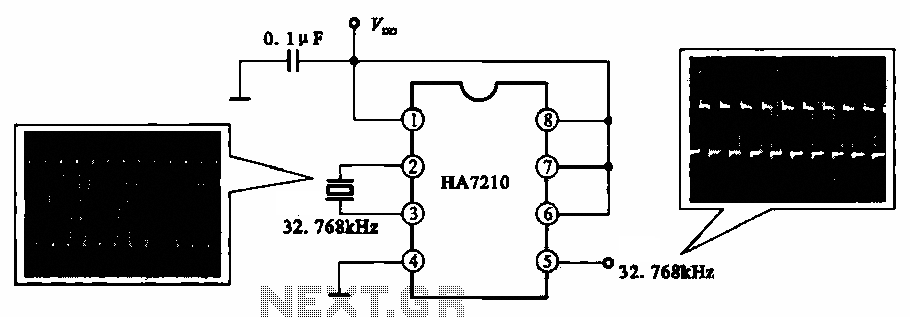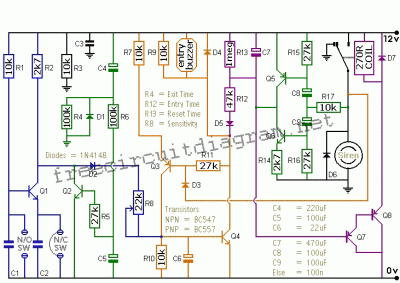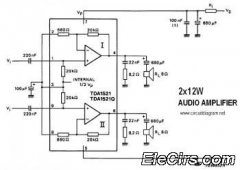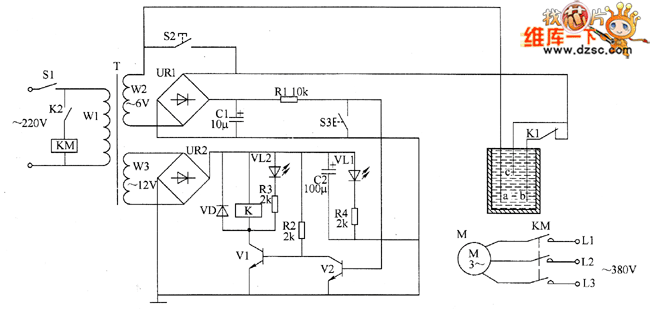
Construction LED circuit diagram CD4017 CD4011
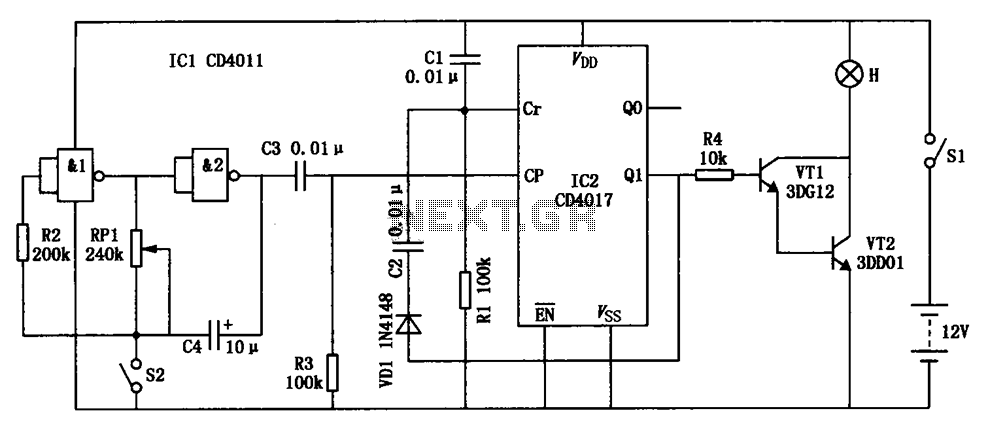
The construction LED circuit illustrated in the figure requires manual power. Once powered, the light will blink to alert individuals to pay attention to safety.
The circuit is designed to enhance safety awareness in construction environments by utilizing a blinking LED as a visual alert. The primary components of the circuit include a power source, an LED, a resistor for current limiting, and a switching mechanism to control the blinking behavior.
The power source can be a battery or an external power supply, providing the necessary voltage to operate the LED. A resistor is connected in series with the LED to limit the current flowing through it, thereby preventing damage to the LED due to excessive current. The value of the resistor can be calculated using Ohm's Law, taking into consideration the forward voltage drop of the LED and the supply voltage.
To create the blinking effect, a switching mechanism is employed. This could be implemented using a simple transistor circuit or a timer IC such as the 555 timer in astable mode. The timer generates a square wave output that turns the LED on and off at a specified frequency, creating the blinking effect. The frequency of blinking can be adjusted by changing the values of the resistors and capacitors in the timer circuit.
The overall layout of the circuit should ensure that all connections are secure and that the components are rated for the required voltage and current levels. Proper placement of components on a breadboard or PCB will facilitate ease of assembly and troubleshooting. Additionally, incorporating a protective casing for the circuit can enhance durability and safety, especially in a construction site environment.
This LED circuit serves as an effective reminder for safety precautions, making it a valuable addition to any construction site.Construction LED circuit shown in Figure. It requires manual power, after the circuit is powered, the light will blink to remind people to pay attention to safety.
The circuit is designed to enhance safety awareness in construction environments by utilizing a blinking LED as a visual alert. The primary components of the circuit include a power source, an LED, a resistor for current limiting, and a switching mechanism to control the blinking behavior.
The power source can be a battery or an external power supply, providing the necessary voltage to operate the LED. A resistor is connected in series with the LED to limit the current flowing through it, thereby preventing damage to the LED due to excessive current. The value of the resistor can be calculated using Ohm's Law, taking into consideration the forward voltage drop of the LED and the supply voltage.
To create the blinking effect, a switching mechanism is employed. This could be implemented using a simple transistor circuit or a timer IC such as the 555 timer in astable mode. The timer generates a square wave output that turns the LED on and off at a specified frequency, creating the blinking effect. The frequency of blinking can be adjusted by changing the values of the resistors and capacitors in the timer circuit.
The overall layout of the circuit should ensure that all connections are secure and that the components are rated for the required voltage and current levels. Proper placement of components on a breadboard or PCB will facilitate ease of assembly and troubleshooting. Additionally, incorporating a protective casing for the circuit can enhance durability and safety, especially in a construction site environment.
This LED circuit serves as an effective reminder for safety precautions, making it a valuable addition to any construction site.Construction LED circuit shown in Figure. It requires manual power, after the circuit is powered, the light will blink to remind people to pay attention to safety.

